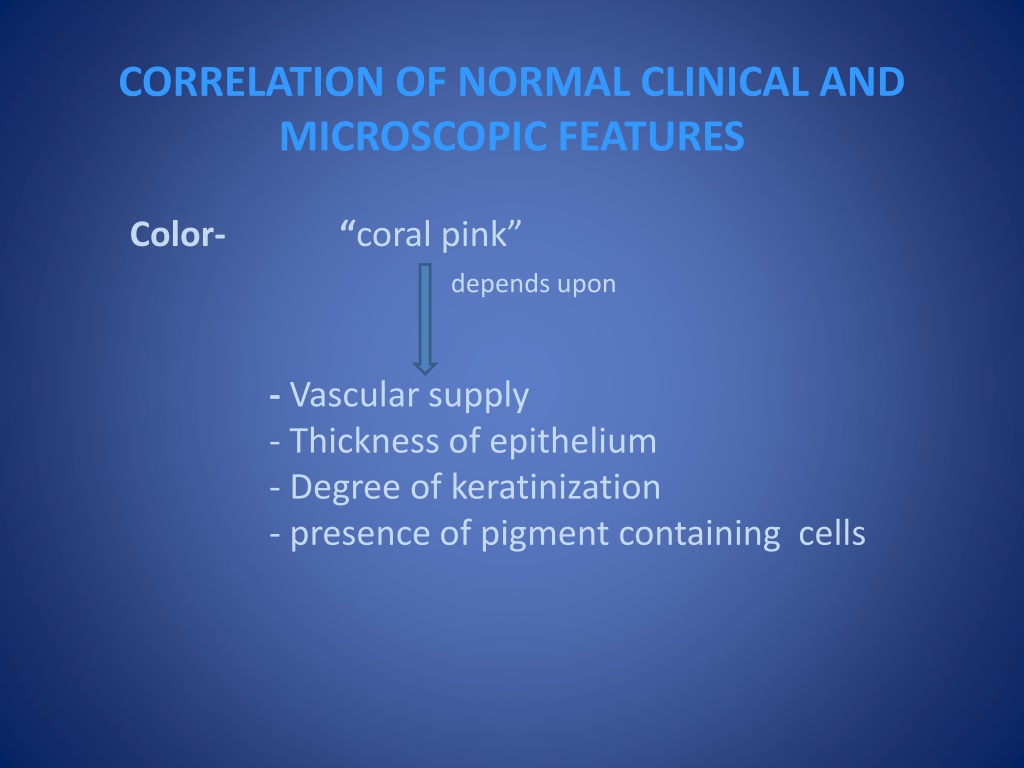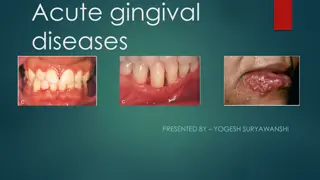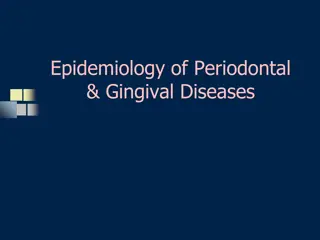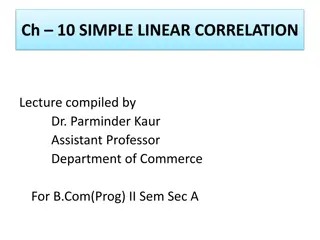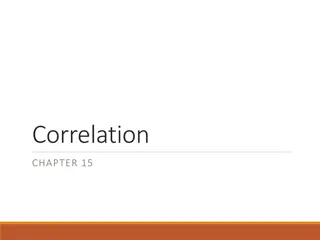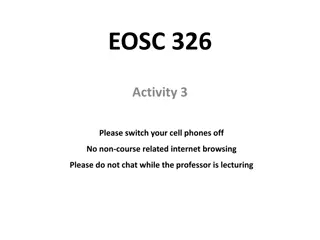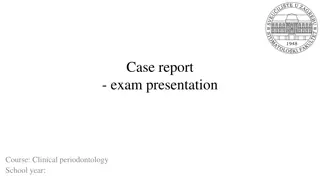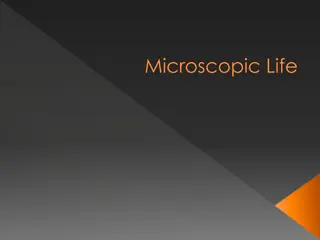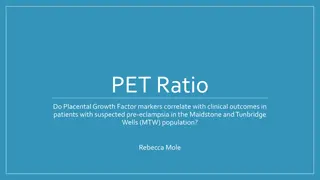Understanding Correlation of Normal Clinical and Microscopic Features in Gingival Health
The correlation of normal clinical and microscopic features in gingival health involves factors such as color, size, contour, shape, consistency, surface texture, stippling, position, and continuous tooth eruption. These elements depend on various aspects like vascular supply, thickness of epithelium, degree of keratinization, and more. Recognizing these features is vital for assessing gingival health and potential disease indicators.
Download Presentation

Please find below an Image/Link to download the presentation.
The content on the website is provided AS IS for your information and personal use only. It may not be sold, licensed, or shared on other websites without obtaining consent from the author. Download presentation by click this link. If you encounter any issues during the download, it is possible that the publisher has removed the file from their server.
E N D
Presentation Transcript
CORRELATION OF NORMAL CLINICAL AND MICROSCOPIC FEATURES Color- coral pink depends upon - Vascular supply - Thickness of epithelium - Degree of keratinization - presence of pigment containing cells
Size Corresponds to the sum total of the bulk of cellular and intercellular elements and blood supply
Contour - Scalloped outline depends upon - Shape of teeth -Alignment of teeth in arch -Location and size of proximal contact -Dimension of embrassures
Shape- The shape of interdental gingiva depends upon - contour of proximal tooth surface - Location and shape of gingival embrassures
Consistency - Firm and resilient Because tightly bound to the underlying bone
Surface texture - Orange peel appearance Stippling Attached gingiva is stippled but marginal gingiva is not. Stippling varies with age
Stippling is form of adaptive specialization or reinforcement of function. It is a feature of healthy gingiva. Reduction or loss of stippling is a common sign of gingival disease. when gingiva is restored to health after treatment, the stippled appearance returns.
Position- Position of gingiva refers to the level at which gingival margin is attached to the tooth. When tooth erupts in the oral, cavity the margin and the sulcus are at the tip of the crown; as eruption progresses they are seen closer to root
Continuous tooth eruption 1- Active - movement of the teeth in the direction of occlusal plane. 2- Passive - migration of gingiva. exposure of the teeth by apical Active and passive eruptions proceeds together.
Anatomic crown- portion of tooth covered by enamel Anatomic root - portion of tooth covered by cementum. Clinical crown- portion of tooth that has been denuded of its gingiva and projects in to oral cavity. Clinical root- portion of tooth covered by periodontal tissue.
Passive eruption 4 stages- Stage I the tooth reach the line of occlusion. The junctional epithelium and base of sulcus are on the enamel. Stage II base of sulcus is on the and part of junctional epithelium is on the root.
Stage III base of the gingival sulcus is at the CEJ and entire junctional epithelium is on the root. Stage IV- base of the gingival sulcus and junctional epithelium is on the root.
